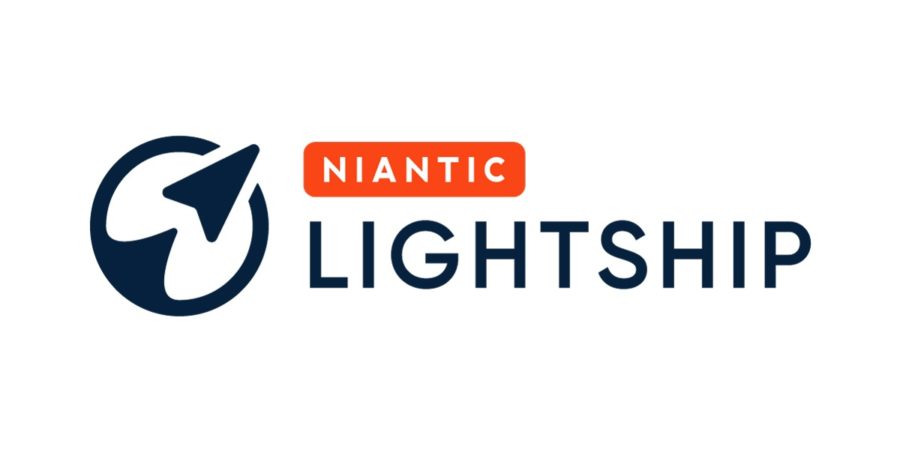
May 12, 2021 – Niantic, developer of Pokémon GO, and provider of a ‘planet-scale’ augmented reality (AR) platform, has announced that its ‘Niantic Real World Platform’ is getting a new name — Niantic Lightship — and that the company will be offering broader access to the new Niantic Lightship Augmented Reality Developer Kit (ARDK), enabling developers to build their own immersive, imaginative and unique AR applications.
Niantic Lightship encompasses the full Niantic platform, including the suite of tools and services that power Niantic games, from Ingress to Pokémon GO, to the company’s partnership with Nintendo to bring the Pikmin universe to the Niantic community. Niantic stated that Lightship sets the industry standard for mapping and shared, planetary-scale AR experiences.
The Niantic Lightship Augmented Reality Developer Kit offers developers a robust set of tools that allow them to create multiplayer experiences and bring them to life with depth, physics, occlusions, and semantic segmentation.
Niantic noted that since launching the Niantic Lightship ARDK as a private alpha earlier this year, hundreds of gaming and non-gaming developers have engaged with the company’s engineering, product development and support teams to test the limits of what’s possible with the technology. The feedback from these developers has helped shape the AR tools, features, documentation and core functionality of the Niantic Lightship platform, and as a result the ARDK private beta incorporates a host of advanced tools, including enhancements in three key areas:
Real-time Mapping through advanced Meshing combines smartphone camera technology with a neural network, to map an environment in real time into a mesh of repeating tessellated triangles, resulting in a machine-readable representation of the physical world. In the Niantic Lightship ARDK, meshing makes “physics” possible for virtual objects;
Semantic Segmentation helps distinguish between varied characteristics of a space (e.g. ground, sky, a building, etc.) so that virtual objects can look, feel and move in that space in realistic ways. Lightship can automatically segment different natural outdoor objects in a scene, enabling AR content to interact with specific surfaces;
More robust Multiplayer functionality allows developers to benefit from colocalization, networking and synchronization improvements, enabling immersive multiplayer experiences where up to eight players can share the same AR experience in the same real world space at the same time. Peer-to-peer messaging and back-end server features are also built in, so developers can focus on sculpting the shared experience. While this kind of content anchoring is currently ephemeral, Niantic states that long-term virtual content anchoring will enable developers to build future AR experiences that persist.
“Niantic is building the 3D map of the world hand-in-hand with its player base to power new kinds of immersive AR experiences,” said Kei Kawai, Niantic’s Vice President of Product Management. “With the Niantic Lightship Platform and ARDK, we want to provide the richest selection of development tools and technologies, so any developer can create their own unique experiences.”
One of the foundational technologies in the AR space is meshing, which Niantic enables on devices by leveraging common smartphone cameras. Its unique approach creates meshes using the RGB color sensors found in most cameras, rather than requiring LiDAR scanners only available on some high end devices. Instead, Niantic’s meshing technology scans the environment around a player, creating in real time a 3D map that allows any Lightship platform experience to place virtual content in the right physical place, combining context from the real world environment with the developer’s environment.
However, the technology does also blend seamlessly with phones that do have LiDAR, including iPhone 12 Pro models, allowing developers using the Niantic Lightship ARDK to create dynamic maps for experiences without worrying about specific devices.
Finally, Niantic added that in order to fully realize the future of AR, we will need a 3D map of the world. As a result, the company is building its ‘Virtual Positioning System’ (VPS) and advanced tools that allow AR experiences to leverage geolocation and persistent content anchoring with precision, while also supporting global scale.
Interested developers can sign up to join the private beta of the Niantic Lightship ARDK, as well as learn more about Niantic Publishing. For more information on Niantic and its AR innovations, please visit the company’s website.
Image / video credit: Niantic
About the author
Sam Sprigg
Sam is the Founder and Managing Editor of Auganix. With a background in research and report writing, he has been covering XR industry news for the past seven years.




